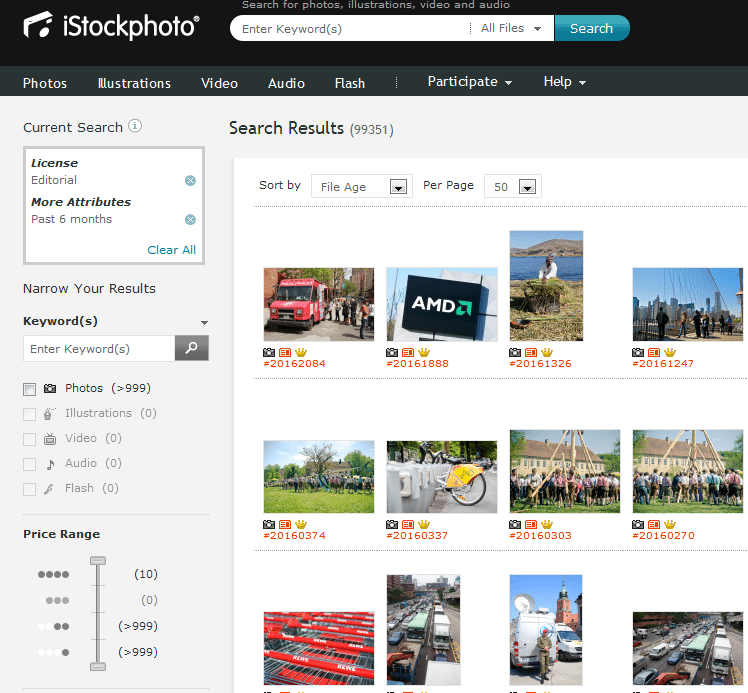Unfortunately, this one is often false. A photo can have great composition and color, but when you look at it on your computer screen you really can’t tell if it’s a sufficiently high resolution to work in your video production. Digital photos taken with older digital cameras often have a low resolution, and while you may not notice anything missing on your computer screen they will look washed out and fuzzy in video—and terribly blurry if you’re using the video on a big screen at an event. We recommend that images be at least 1MB for any video—though 800kb can be acceptable—and if you are going to show your video on a big screen, go for the high end options.
If none of the images you wanted to use in your video have the right specs to use, don’t despair. There are many great sources for cheap or even free photographs that often provide options at different resolutions (and prices) for different uses. Some of our favorites include:
When using a photo that doesn’t belong to you, be sure to read the fine print. You may be allowed to use some material only in an educational/noncommercial capacity. You may not be able to alter the material. You may need to include an attribution. When in doubt, contact the owner of the material and ask for permission. Many copyright holders are glad to have exposure.
If you’re making a video about a sensitive issue, stock photos can be especially useful. While in general we advise including the faces and voices of people you serve, if you need to protect the identity of the people you serve, or need to get something up quickly, stock photos can be the perfect solution.
With high-quality photos incorporated into your videos, and perhaps animated as well, you’ll be adding dimension to your stories and the people in them—and will end up with far more than a slide show.
If MiniMatters can help you use this tip or serve your other video needs, we’d love to talk with you at 301-339-0339 or via email at [email protected].


